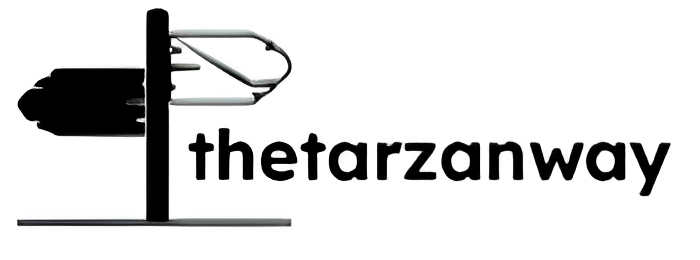9 Indian Ancient Ruins to See to Get Away from Technology

With all the notifications, scrolling, and buzzing of digital life, the need to disconnect has never been stronger. A lot of the time, we dream of going somewhere where we can turn off our phones, clear our heads, and just be in the moment. A beach or a mountain retreat is a great choice, but the ancient ruins of India are a special kind of peaceful place that has been quiet for hundreds of years. These old buildings are full of forgotten stories from the past, showing off the amazing art and engineering of our ancestors. When you visit them, it’s like going back in time to a place without Wi-Fi and deadlines. They want you to walk around, think, and hear the whispers of the past. These peaceful and quiet places are the best places to go to get away from technology. It’s a chance to get away from the noise and reconnect with nature, history, and yourself. “So, get ready to pack your favorite books and a basket for a picnic. These 9 amazing old ruins in India are great places to get away from the modern world.” 1. Raigad Fort in Maharashtra: The Capital of an Empire A picture from a Wikipedia page Raigad Fort was the capital of the great Maratha warrior Chhatrapati Shivaji Maharaj. It is on top of a huge hill in the Sahyadri mountains. This fort, which was thought to be impossible to break into, is a symbol of Maratha pride and is known as the “Gibraltar of the East.” Why It’s Great for a Digital Detox: Walking around the fort is a great way to stay active and present because it is so big. From the top, the views of the valleys and hills all around are amazing and make you feel like you’re on top of the world. The Story Behind the Ruins: Shivaji was crowned king at the fort and spent a lot of time there during his reign. You can see the ruins of his court, public spaces, watchtowers, the main market, and his tomb today. Traveling Toolkit: The best time to go is from September to March. The monsoon season is also pretty, but the trek can be slippery. Things to Do: You can either hike up the 1,737 steps to the top, which takes about 2–3 hours, or take a 4-minute scenic ride on a ropeway. Visit the ruins and take in the beautiful views. Pro Tip: Choose to hike up and take the ropeway down as a pro tip. The hike is worth it, and you’ll have more energy to explore the big fort area at the top before taking a nice ride down. 2. The Martand Sun Temple in Jammu and Kashmir is a wonder of the Himalayas A picture from a Wikipedia page The Martand Sun Temple is one of the most beautiful and underrated ancient ruins in India. It stands proudly against a backdrop of snow-capped Himalayan peaks. King Lalitaditya built this temple in the 8th century to honor Surya, the Sun God. Why It’s Great for a Digital Detox: The temple is in a quiet, open field near Anantnag and gives off a deep sense of peace. The ruins are grand, and the Kashmir valley is beautiful. It’s a great place to think and take pictures. The Story of the Ruins: The temple is a great example of Kashmiri architecture because it combines styles from Gandhara, Gupta, Greece, and Rome. Even though it is in ruins, its beautiful colonnades and detailed carvings still give a sense of how grand it used to be. Traveler’s Toolkit: The best time to go is from April to October, when the weather is nice. Things to Do: Look at the temple’s architecture, have a quiet picnic on the lawns, and take pictures of the ruins with the beautiful mountains in the background. Pro Tip: Get a local guide from Anantnag. A guide can help you understand the temple’s history and the meaning of its unique architectural features. 3. Hampi, Karnataka: The Lost Empire of Boulders A picture from Unsplash- Sandip Hampi was once the beautiful capital of the powerful Vijayanagara Empire. Now, it is a UNESCO World Heritage Site and one of the most beautiful places in India. The remains of grand temples, royal palaces, and busy markets are scattered across a strange landscape of huge, rust-colored boulders and lush green rice fields. Why It’s Great for a Digital Detox: The size of Hampi is so big that it makes you want to walk, bike, and explore for hours. The Tungabhadra River flows peacefully through the otherworldly landscape, which has a calming effect that makes you forget about your phone. The Story Behind the Ruins: Hampi was a rich, busy city from the 14th to the 16th centuries, known for its art and architecture. After it was taken over and left in ruins, its glory came to an end. Today, all that is left is a stunning open-air museum. The Vittala Temple, with its famous stone chariot and musical pillars, shows how skilled people were at the time. Traveler’s Tools: The best time to go is between October and February, when the weather is nice. Rent a bike or scooter to see the huge ruins, take a coracle boat ride on the river, climb Matanga Hill for a beautiful view of the sunset, and listen to the musical pillars at Vittala Temple. Pro Tip: If you want a more relaxed and disconnected vibe, stay in a guesthouse on the “hippie island” side of the river (Anegundi). There isn’t much internet access here, so you’ll have to naturally take a break from technology. 4. Dhanushkodi, Tamil Nadu: The Ghost Town at the End of the World A picture from the Wikipedia website Dhanushkodi is a ghost town that is hauntingly beautiful. It is on the southeastern tip of Pamban Island. In 1964, a terrible cyclone wiped out the whole town, which used to be a busy ferry
Shimla Guide: Discover the Charm of the Hills
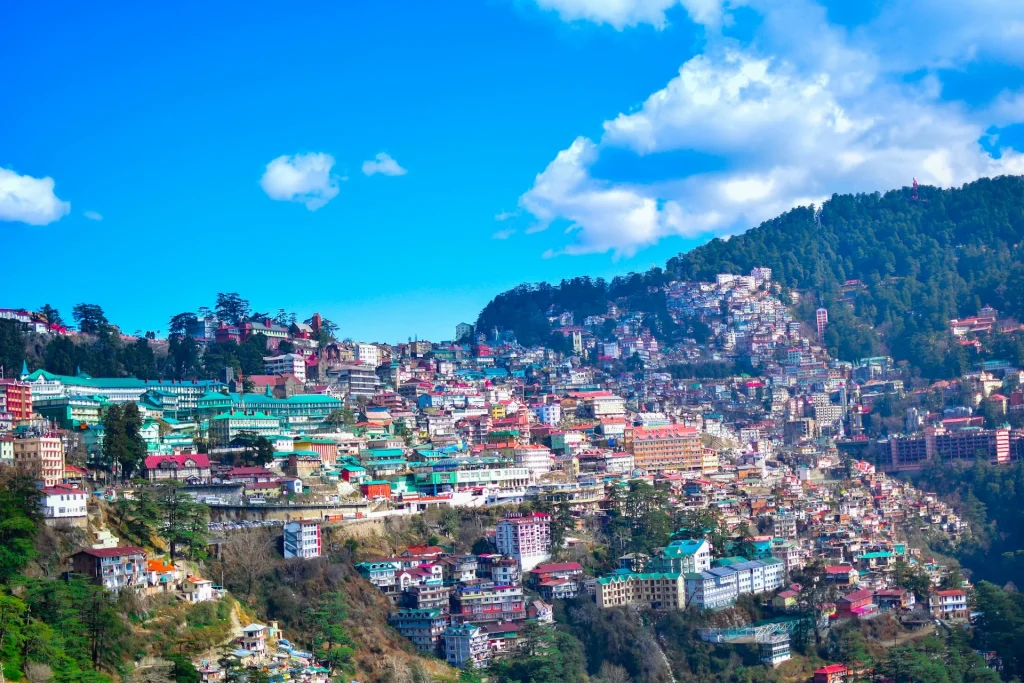
Where the Hills Echo: An Introduction, The Past Picture a place where the air smells like pine trees covered in mist, colonial-era buildings stand as proud reminders of a time long gone, and the majestic Himalayas rise up behind it all. This is Shimla, not a dream. This beautiful hill station was once the summer capital of British India. It still draws travellers in with its unique mix of natural beauty and architectural elegance. This place is more than just a vacation spot; it’s a trip back in time. Shimla is the answer for people who want to get away from the noise of the city and into a world of peaceful scenery and interesting history. This guide is meant to be your best friend as you explore every part of the “Queen of Hills.” We’ll show you around its famous sights, take you on secret trails, let you taste its local foods, and give you all the useful advice you need to plan an amazing trip. The Tarzan Way brings immersive storytelling journeys to life, allowing travellers to safely explore Shimla’s historic lanes and beautiful viewpoints, where every corner has a story and every view is a work of art. Are you ready to be charmed? Let’s go to the heart of Shimla and find out why it has always been so appealing. Key Takeaways: A Historic Getaway: Find out why Shimla was the summer capital of British India and see its beautiful colonial buildings, such as the Viceregal Lodge and Christ Church. Famous Places: Find out about the must-see places, such as The Ridge, Mall Road, and the Jakhoo Temple, which has a huge statue of Lord Hanuman. UNESCO World Heritage: Take a ride on the Kalka-Shimla Toy Train, a historic train ride that gives you stunning views of the Himalayas. Beyond the Town: Kufri is great for adventure sports, Chail is great for its peaceful palace, and Mashobra is great for its peaceful nature trails. Practical Planning: Find out when the best time to go is, how to get to Shimla, where to stay, what to eat, and other important travel tips. Be a responsible traveller: Learn how to travel mindfully in the Himalayas so you can protect its beauty and culture with help from groups like The Tarzan Way. 1. A Look into Shimla’s Royal Past Credit: Unsplash Shimla was once a quiet group of villages before it became a busy tourist spot. In the 1820s, British officers looking for a break from the hot Indian summers found its nice weather and changed their fate. In 1864, it was officially named the British Raj’s summer capital. For the next few decades, the whole government would move here from Calcutta (and later Delhi) for six months each year. Because of this yearly migration, Shimla became a centre of power, glamour, and political intrigue. It was given the nickname “Queen of the Hills.” The beautiful buildings, the carefully planned Mall Road, and the overall layout of the town are all lasting gifts from this time period. Advice for Travellers You can see rare photos and objects from the British Raj at the Shimla Heritage Museum. Hire a local guide to take you on a heritage walk so you can hear interesting stories and anecdotes that aren’t in guidebooks. Read Rudyard Kipling’s “Kim,” which has Shimla in it a lot, to get a sense of what the town was like at that time. Quick Facts Shyamala Devi, the goddess Shyamala, was the name before. Height: About 2,276 metres (7,467 feet). Importance in history: From 1864 to 1947, it was the summer capital of British India. 2. The Ridge and Mall Road are the heart of Shimla Credit: Unsplash A leisurely walk along The Ridge and Mall Road, Shimla’s two most famous streets, is a must for anyone who goes there. In the middle of town, The Ridge is a big open area with amazing, unobstructed views of the snow-capped Himalayan ranges. It is the centre of all cultural activities and is surrounded by important landmarks. Mall Road, a street without cars, is just below The Ridge. It is lined with colonial-style buildings, busy shops, cute cafes, and restaurants. It’s the main shopping street and social centre of Shimla. It’s a great place to go for a walk, look for souvenirs, or just enjoy the lively atmosphere. Tips for Travellers The Ridge has the best views and photo opportunities at sunrise and sunset. It’s a classic Shimla experience to get soft ice cream from the vendors on Mall Road. Wear shoes that are easy to walk in because the road is only for pedestrians. Why It Draws Tourists: Because it’s the best way to experience a hill station. The mix of beautiful mountain views, old buildings, and lively local life makes for a relaxing and energising atmosphere. 3. Amazing buildings from the British period Credit: Unsplash Shimla is a museum of colonial architecture that is still in use. The neo-Gothic, Tudor, and Victorian styles of the buildings here tell stories of a grand past. Christ Church is the second-oldest church in North India and is on The Ridge. You have to see it because of its beautiful stained-glass windows, tall spire, and peaceful atmosphere. At night, when the church is lit up, it looks especially nice. Viceregal Lodge and Botanical Gardens: This used to be the home of the British Viceroy of India. Now it is home to the Indian Institute of Advanced Study. Scottish Baronial architecture is amazing. Take a guided tour of the inside to see the teak-panelled walls and learn about the important decisions that were made there, like the ones that led to the partition of India. Gaiety Theatre: A Victorian theatre on Mall Road that has been beautifully restored. It used to host famous people like Rudyard Kipling. It still hosts a variety of cultural events and plays. Advice for Travellers Because the times for the Viceregal Lodge tour are set, you should check
Instagram-Worthy Travel in India (2025): Most Photogenic Spots + Guide
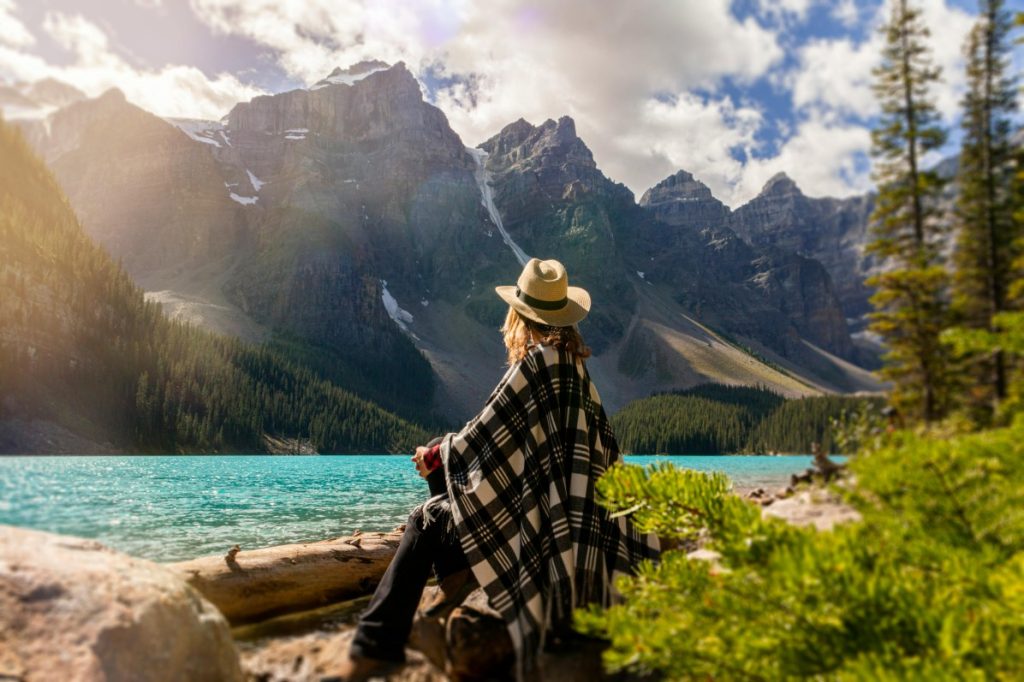
Traveling is now more than just crossing places off your list; it’s also about catching moments to post on Instagram. With India’s abundance of breathtaking scenery, you’ll need to have a picture-perfect travel planner’s mindset to capture every moment, from street-vibe motion to sunrise reflections. No matter if you’re a solo traveler or first time visitor, this guide will help you discover all the popular photogenic destinations of India, along with the best tips and advice regarding when to visit, ideal time, and festivals to attend for best travel photography. 1. Golden Hour Landscapes: Desert, Mountains & Water India offers breathtaking scenery that is worth a double-tap and these locations are one of such most popular spots on travel photography lists. Unique Highlights: For dramatic, minimalist frames, desert dunes provide silhouettes, Himalayan valleys provide layered mountain backdrops, airy skies and lakes create symmetry that works for both photos and reels. Best Destination to Experience: Visit places like Jaisalmer, Pangong Lake, Spiti Valley, Nubra Valley, Rann of Kutch. Pro Tip: Golden hour is the best time for photography. Use the panorama mode. Keep a wide-angle lens. 2. Vibrant Cities & Colourful Streets The pastel-shuttered lanes of Pondicherry, the vibrant pinks of Jaipur, and the chaotic charm of Delhi’s Chandni Chowk are all excellent photogenic locations for narrative photographs. Unique Highlights: Context is added by architectural backgrounds. Street scenes are ideal. Color-coding lanes or houses (think pink, mustard, or turquoise) are best for engaging grids. Best Destination to Experience: Visit places like Jaipur, Pondicherry, Delhi (Chandni Chowk), Varanasi (Ghats & Alleys), Jodhpur (Blue City). Pro Tip: For soft architectural light, visit shortly after sunrise, to see double-colored, reflective wet pavements visit after rain. 3. Heritage + Culture Scenes Heritage sites provide layers of meaning in every frame, which is ideal for a travel planner who wants both beauty and story. Unique Highlights: Ruins, architecture, and carvings provide interesting shadows and natural frames. Better lighting and fewer crowds can be found when visiting in the early morning. Best Destination to Experience: Visit places like Hampi, Khajuraho, Agra (Taj Mahal & Fort), Udaipur (City Palace), Ajanta & Ellora Caves. Pro Tip: Look into photography permissions beforehand. Video and tripods are prohibited in some places. 4. Beaches, Backwaters & Island Dream Scenes If you want to travel with a “relax-and-shoot” mentality, India’s beaches and serene waterways provide both peace and visual appeal. Unique Highlights: Open horizon lines, gentle waves, and water reflections combine to create serene images. Excellent background is available for lifestyle photos. Around coastal towns like Fontainhas and Goa, pastel-colored streets add diversity. Best Destination to Experience: Visit places like Radhanagar Beach (Havelock Island), Kerala Backwaters (Alleppey), Goa, Varkala, Gokarna. Pro Tip: If you plan to take pictures near water, bring a waterproof phone pouch. 5. Festivals, Local Food & Authentic Moments Pictures of people, events, and regional cuisine bring life to our feed. Whether it’s a Rajasthani festival or Delhi street food, these occasions foster genuine engagement in Instagram. Unique Highlights: Local customs, fairs, and festivals like Diwali offer dynamic, vibrant, and emotionally charged scenes. Local food, such as regional specialties and street vendors, gives your grid and story more flavor. Authentic interactions provide distinctive highlights. Best Destination to Experience: Visit places like Jaipur (Holi & Teej Festival), Delhi (Street Food & Fairs), Varanasi (Ganga Aarti), Pushkar (Camel Fair), Kolkata (Durga Puja). Pro Tip: Get the consent before taking close-ups. To separate emotion, use a prime lens or a zoom to a moderate extent. Travel Planner Checklist & Packing for the Photo Hunt Unique Highlights: Always have an extra SD card or memory and a portable charger with you. Carry a waterproof bag or pouch, a spare lens cloth or lens cleaner, and a light jacket or scarf for early morning shoots (particularly on the coast or in the hills). Pro Tip: Each day, create a loose “photo itinerary” by planning one or two important shots (local market, golden hour), allowing extra time for impromptu moments. Best Time for Photography Shoot in India When planning a trip to India, timing is crucial. The light and mood you want your pictures to capture will determine the ideal time for a photography shoot. Winter (October to February) It’s perfect for outdoor shoots because of the clear skies, bright sunshine, and comfortable weather. Best Destinations: Spots like Jaipur, Delhi, Agra, Varanasi, Rann of Kutch, and Goa. Highlight: The gentle, diffused light from the low sun angle is ideal for architecture and portraiture. Summer (March to June) Summer brings vibrant colors and fewer crowds, despite the heat. This season brings out the beauty of the Himalayan landscapes and hill stations. Best Destinations: Ladakh, Spiti Valley, Darjeeling, Sikkim, and Ooty. Highlight: Glacial lakes and snow-capped mountains shine bright during early morning. Monsoon (July to September) Monsoon shots are the best for drama and mood. Anticipate a lot of greenery, mist, and reflections. Best Destinations: Spots like Kerala backwaters, Coorg, Munnar, Meghalaya. Highlight: Soft, cloudy skies soften harsh shadows. It is perfect for narrative shots. Pro Tip: Schedule your activities around sunrise and sunset. The blue hour intensifies contrast and mood, while the golden hour adds warmth. Festival Frames: Capture India in Celebration Holi: Festival of Colours (March) Powder clouds of pink, yellow, and green create impromptu and vibrant frames. Where: Mathura, Vrindavan, Barsana, and Jaipur. Unique Highlight: Early morning temple processions and laughter-filled crowd scenes. Pro Tip: Use a fast shutter speed. Protect your phone or camera with a waterproof case. Diwali: Festival of Lights (October–November) With the use of fireworks, golden lamps, and festive clothing, everything seems to be glittery. Cities are transformed into glittering canvases. Where: Places like Varanasi, Jaipur, and Delhi. Unique Highlight: Take pictures of diyas by rivers or houses that are lit up at night. Pro Tip: To prevent blur in low light, use the night mode or manually adjust the ISO. Pushkar Camel Fair (November) Travellers who enjoy earthy, rustic frames, this desert fair is must-go to spot. Where: Places
8 Best North Goa Hotels with Private Beaches for a Unique
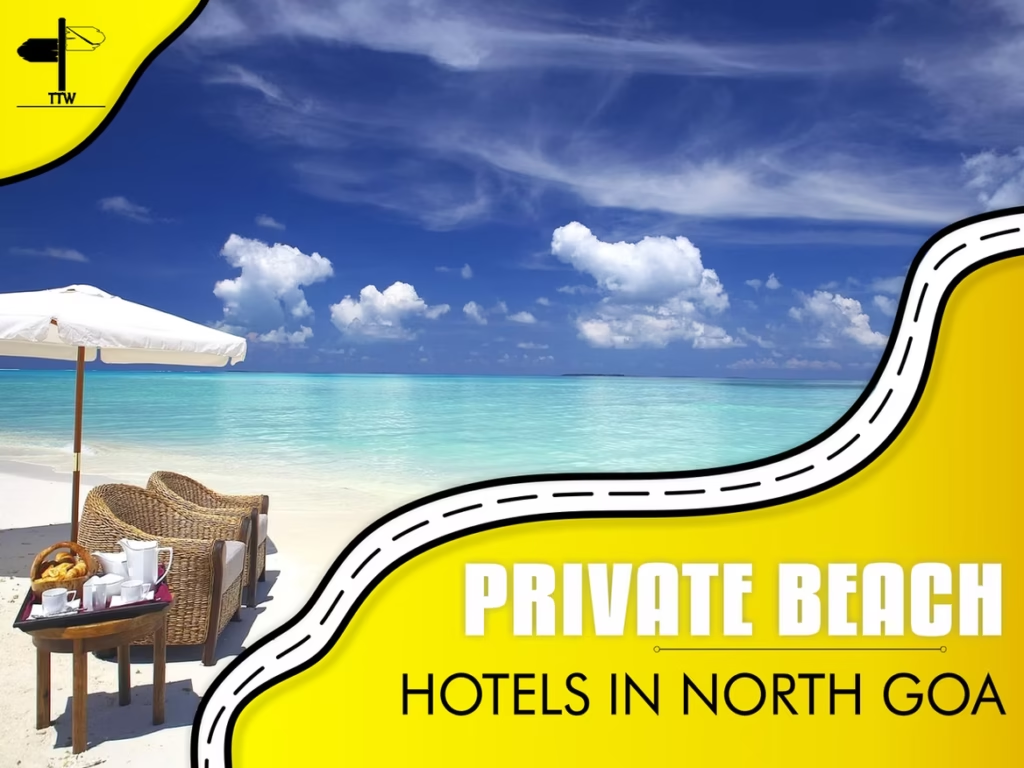
A trip to Goa is magical in its own way, but it can be hard to find a quiet spot on its sunny beaches. North Goa is a popular place for tourists because of its lively atmosphere, well-known markets, and famous nightlife. But what if you want both the thrill of the north and the calm luxury of a private beach? The dream is to leave your room and walk onto a beautiful beach that is only for you. In India, it’s hard to find a truly “private” beach. But a few great hotels offer the next best thing: private, direct access to quiet, secluded parts of North Goa’s famous coastline. These resorts are the perfect place to relax, unwind, and enjoy the sun and sea in peace. Are you looking for the perfect mix of location, luxury, and privacy? We did the work for you. Forget about the long search and reviews that never end. This carefully chosen list includes the best North Goa hotels with private beach access, chosen for every budget and type of traveller. Your perfect beachfront getaway is waiting for you, whether you want a 5-star convention centre or a stylish bungalow by the sea. A Quick Note About Goa’s “Private Beaches” You should know that Indian law says that all beaches are public property. So, no hotel can own a beach. When hotels say they have a “private beach,” they usually mean one of two things: Access to Private: There is a private path from the hotel to a public beach, which is usually a quieter, more private area. Roped-off Area: The hotel has a private area on the beach just for its guests, with sunbeds, umbrellas, and staff to help them. This guide lists hotels that offer this amazing level of exclusive access, so you can have the private beach experience you’ve always wanted. The Best 8 Hotels in North Goa with Their Own Beaches 1. Hotel Hill Rock, Goa Credit: justdial.com Best For: Get Away from It All on a Quiet Hilltop. Location: Near Tiracol River, Querim Hotel Hill Rock is the perfect place to get away from it all if you want real peace and quiet. This beautiful retreat resort is on top of a hill and has stunning views of the Tiracol River and the Arabian Sea. The peaceful and natural setting will help you forget about the stress of living in the city. Why We Love It: The atmosphere is calm and intimate because there are only 18 well-appointed rooms. There are hammocks all over the lush lawns, which are great for a nap in the afternoon with the sound of the ocean in the background. The two beautiful pools are great places to cool off and look out at the ocean. The Beach Experience: The resort has a private beach at the base of the property. It’s a quiet stretch of sand where you can watch the sunset in peace or see a sky full of stars at night. Price Range: ₹2,200 per night 2. The Ivy Anjuna Credit: ivyanjuna.com/gallery-page Best for: A stylish and modern boutique vacation. Anjuna is where it is. The Ivy Anjuna is the best place for a modern traveller who wants style and privacy. This boutique hotel is a stylish oasis in the middle of lively Anjuna. Its sleek, modern design and classy atmosphere make it stand out. It’s great for couples and people travelling alone who want to relax and pamper themselves. Why We Like It: The rooms are beautifully designed, with modern furniture and small touches of traditional Indian style. The property offers a fantastic range of amenities, including a world-class spa for pampering and a well-equipped fitness centre. There are many places to eat on-site, so everyone can find something they like, from local Goan dishes to food from around the world. The Beach Experience: The hotel’s private beach area is the best part. It’s a beautiful, well-kept, and private place where you can get some sun, take in the amazing views, and feel like you’re far away from the crowds in Anjuna. Cost: About ₹6,500 per night 3. Beach Beauty (Beleza By The Beach) Credit: belezagoa.com Best for: A Quiet South Goa Vibe (Honourable Mention) Colva, South Goa We had to give an honourable mention to Beleza By The Beach, even though our main focus is on North Goa. This is because it is often recommended for its amazing private beach experience. Please be aware that this resort is in South Goa. It’s great for people who want to see both parts of Goa. Why We Like It: It’s a private getaway on the quiet, clean sands of Colva Beach. The property has a lovely outdoor pool, spa, and sauna that are perfect for relaxing. Two restaurants on the property serve a wide range of tasty international dishes. The Beach Experience: The hotel has direct access to a clean, private stretch of Colva beach, which is a great place to get away from the same old things. Price Range: ₹8,437 per night 4. Taj Resort & Convention Centre in Goa Credit: www.tajhotels.com Best for: The most luxurious 5-star stays and big events. Where: Vainguinim Beach, close to Panjim. This five-star hotel is a world unto itself, with beautiful architecture and legendary Taj service. As soon as you walk into the fancy lobby, you are surrounded by luxury. The resort is on a cliff, which gives guests stunning views of the Arabian Sea from all sides. Why We Like It: The suites are huge and have beautiful decor, with living rooms that have sparkling chandeliers. The raised deck with the beautiful infinity pool is the best place to see the sunset. The Jiva Spa has treatments that will make you feel better and help you relax after a day of exploring. The Beach Experience: The hotel gives guests direct, private access to the calm and peaceful Vainguinim Beach. It’s a quiet, clean stretch of sand that’s away from the
Explore Bali Beyond Ubud: Hidden Beaches & Villages

Most people visiting Bali will think of rice terraces and yoga retreats in Ubud, but the island’s true beauty is often found away from the common hotspots. Bali offers hidden beaches, traditional villages, waterfalls, and adventure trails, which underpin a cultural, nature, and local life-filled Bali adventure for all visitors to experience. Utilize a Bali travel planner or Bali trip planner to help ensure that you discover Bali’s hidden gems efficiently and in a meaningful way. Offbeat Beaches Canggu Bali: Surf, yoga, and sunset vibes! With hip cafes, smoothie bowls, and live music, Canggu is perfect for Bali solo travel or couples. Sanur Bali: Calm, family-friendly, and perfect for traveling the beachfront by bike. It is also the gateway to see Nusa Lembongan and Nusa Penida for an island getaway. Nusa Dua Bali: Home to luxury resorts, white sand beaches, and cultural experiences such as Museum Pasifika, Nusa Dua is perfect for Bali honeymoon packages all inclusive. Jimbaran Bali: Known for its sunset seafood dinners on the beach, Jimbaran is a must-visit for couples and families traveling together. Hidden Villages & Cultural Escapes Sidemen Village: Surrounded by stunning rice fields and offers weaving workshops and homestays. This is the perfect destination for the Bali honeymoon itinerary and provides a peaceful and authentic experience. Penglipuran Village: Regarded as one of the cleanest villages in Bali and continues to maintain its traditional architecture and local traditions. Tabanan & Jatiluwih Rice Terraces: UNESCO-recognized rice terraces that are perfect for an early morning walk, taking photos, and engaging with local culture. Adventure Trails Mount Batur Trek: Trekking to the summit of Mount Batur for sunrise views over the lake and volcano. Moderate difficulty; guided treks recommended. Rice Terraces and the Tegallalang: Walk paths to see the rice terraces or just be present to see produce agriculture and interact with farmers doing traditional irrigation. Waterfalls: Tegenungan (easy access), Tukad Cepung (different – hidden cave), Sekumpul (remote jungle). Wellness & Yoga Retreats Ubud Outskirts: Forest sanctuaries for meditation, healing, and spiritual connection. Canggu: Surf-friendly yoga studios and morning beach sessions. North Bali: Less touristy, perfect for detox, wellness, and mindful relaxation. Where to Stay Budget: Homestays located in Sidemen or Sanur to experience authentic local life. Mid-range: Boutique villas in Canggu or Seminyak to provide comfort and cultural experience. Luxury: Spa resorts located in Uluwatu, Nusa Dua, or Jimbaran for Bali honeymoon packages with everything included. The Tarzan Way offers curated stays connecting you to culture, hidden gems, and immersive adventures. Bali Nightlife & Food Scenes Seminyak: Upscale beach clubs and live music. Pair with spa or cycling tours. Canggu: Night markets, cafés, and acoustic music venues for solo travelers and digital nomads. Jimbaran & Sanur: Sunset dining and relaxed evenings. Local flavors include Nasi Campur, Lawar, Bebek Betutu, and Sate Lilit, best explored through food tours. Suggested 7–10 Day Bali Itinerary Day 1–3: Ubud, Sidemen, Mount Batur sunrise trek, Tegallalang rice terraces. Day 4–5: Canggu, Seminyak, Uluwatu, Jimbaran beach. Day 6–7: Nusa Dua, waterfalls, Sanur, optional island hopping. Optional Days 8–10: Tabanan exploration, workshops, spa retreats, and shopping. Check Complete Bali Itinerary (5, 7, 10 Days) for details. Best Time to Visit Bali April–June: Dry season, ideal for beaches and waterfalls. July–September: Peak season, festivals, and nightlife. October–March: Rainy season, perfect for wellness and spa retreats. Travel Tips Use scooters or local drivers for navigating the area. Remember to bring small bills in IDR for local shopping. Lightweight clothing, swimwear, hiking shoes, and yoga clothes are recommended. Dress modestly at temples and observe local customs. Bali is a rich tapestry of beaches, villages, waterfalls, and temples. Slow down, discover hidden paths, and participate in local life. With experiences curated for you from The Tarzan Way, let your Bali trip be a blend of adventure, culture, wellness, and romance. Begin your hidden Bali adventure today! Ready to dive deeper? Scroll down to explore the complete Bali travel guide and uncover every hidden beach, village, and local experience waiting beyond Ubud. Beyond Ubud – The Real Bali Begins Here When most people think of Bali, they think of Ubud – rice terraces, yoga, and a spiritual sense of calm. For Mira and Karan, who first traveled to Ubud on their honeymoon, Bali was full of secrets that went beyond the obvious postcards. On their second day in Ubud, they left the busy streets and went off the beaten path. They drove before the sun had finished rising over the horizon as they crossed emerald rice paddies, small rivers glistening in the sunlight, and tiny villages watching time pass without visitors. This was the other side of Bali; an island full of stories, traditions, and landscapes that many visitors never see. Bali is not just a group of resorts and temples, it is a living mosaic of experiences waiting to be discovered. If you want to plan a trip like Mira and Karan did in Bali, use a Bali travel planner or Bali itinerary planner. A properly organized Bali itinerary will give you time to visit hidden beaches, ancient villages, and adventure trails, while also capturing the true magic of the island. For first-time visitors, the Bali Travel Guide 2025 – The Ultimate Planner for Your Dream Trip provides detailed tips on transport, cultural etiquette, and must-visit spots. The Allure of Hidden Bali There exists a Bali beyond Ubud, and the busy streets that accompany most tourist centers. This is a Bali where mornings are spent smelling frangipani, witnessing locals work in rice paddies, and fishermen throwing their nets in a quiet cove. Visiting some remote corners of the island can give you: Quiet beaches like Balangan or Bingin, where the ocean seems endless. Authentic villages preserving centuries-old crafts and customs. Adventure trails ranging from volcano treks to jungle waterfalls. Wellness escapes tucked away in quiet corners, perfect for solo travelers or honeymooners. When you plan with a Bali vacation planner or tour packages to Bali, you can create a travel balance of adventure, culture, and relaxing
The Best 10 Places in India for a “Paw-cation” with Your Pet

Some trips are for friends, some are for family, but a trip with your furry best friend is a whole new level of fun. When we go on vacation, it can be hard to leave our pets behind because they are such a big part of our families. The good news is that you don’t have to! More and more places in India are welcoming pets, and more hotels, cafes, and other places will treat your pet like a VIP. But it can be hard to travel with your pets for the first time. It takes more planning and thought, but it’s totally worth it to see your pet run free on a beach or hike up a mountain trail. It’s not only possible to plan a great trip, but it’s also easy with the right information. We made a list of the best places in India for pets and their owners to go together. This will help you get started. Before You Leave: Quick Tips for Taking Your Pet with You Before you even leave the house, you need to plan a successful trip with your pet. Here are some important things to remember: Go to the vet: Make sure your pet gets a full check-up and all of their shots are up to date. Some places may ask for a fitness-to-travel certificate from your vet. Plan how you’ll get there: Taking a car is often the easiest way to travel with pets. You need to book a First Class cabin if you’re taking the train. Airlines like Air India let small pets ride in the cabin on flights, but other airlines have their own rules for pet cargo. Put together a bag of pet supplies: Make sure to bring your pet’s food, water bowl, favorite toys, leash, bedding, a first-aid kit, and a lot of poop bags. Call Ahead: Even if the hotel or resort’s website says they are pet-friendly, you should always call them directly to make sure. Find out about any rules, extra fees, or areas that are off-limits. The 10 Best Places in India for Pets “Let’s now look at the amazing places you and your best friend can go!” 1. Kottayam, Kerala: The Secret of the Backwater Alleppey gets a lot of attention, but Kottayam, a quieter, less well-known town nearby, is a paradise in the Kerala backwaters. It’s a great place to enjoy the peaceful beauty of the area with your pet. Why Your Pet Will Love It: The one-of-a-kind experience of staying on a houseboat that allows pets. Having a picnic or going for a walk near one of the many lovely waterfalls. The calmness of the fishermen’s homes along the banks. Suggestions: Eco Trails Houseboats, Lake Palace Family Resort, and Green Garden Holiday Homes are all good places to stay with pets. Halais Restaurant is a pet-friendly cafe. 2. Uttarakhand: Bhimtal, The Quiet Lake Town Bhimtal is a peaceful town built around a beautiful lake. It’s quieter and less crowded than its famous neighbor, Nainital. The peaceful and quiet atmosphere makes it a great place for you and your pet to get away. Why Your Pet Will Love It: Take a hike through the beautiful forests that surround the town. The excitement of camping in the woods for a night. Taking a much-needed break from the noise of the city in the great outdoors. Suggestions: Emerald Trail, Aamod at Bhimtal, Mountain Club, and Oak Climbing Resort are all good places to stay with pets. Cafes that welcome pets: iHeart Cafe Himalayas. 3. Lonavala, Maharashtra: The Quick Getaway Pet owners in Mumbai and Pune should go to Lonavala for the weekend. This hill station is known for its beautiful waterfalls (especially during the monsoon), green valleys, and wide-open fields where your pet can run and play. Why Your Pet Will Love It: Hiking trails that are easy and safe for pets and great for getting some exercise. There are a lot of safe areas where you can run around without a leash. A lot of resorts have big lawns and private villas that are great for pets. Suggestions: Camp Della Resort, Lonavala Holiday Homes, Rumours Sky Villa & Resort, and The Bob House are all good places to stay with pets. Cafes that allow pets: Cafe Durga and Elephant & Co. 4. Jaipur, Rajasthan: The Royal Experience Don’t let the noise and activity of the Pink City fool you; Jaipur can be a surprisingly fun place for your pet to visit. There are a lot of heritage homes and resorts just outside the city that have big, open spaces that are great for pets. Why Your Pet Will Love It: Taking a walk on the beautiful lawns of pet-friendly heritage hotels. Going on a one-of-a-kind camping trip in the desert. Taking a jeep safari through the nearby deserts. Suggestions for pet-friendly places to stay: Woods Villa Resort, Sunrise Health Resort, and Haveli Kalwara. Halflight Coffee Roasters and Café Quaint are two pet-friendly cafes. 5. Pondicherry: A Getaway with a French Flavor This peaceful coastal town with its beautiful French buildings is a great place for people who want to relax and get some sun. The atmosphere is relaxed, which makes it a great place to take your pet on vacation. Why Your Pet Will Love It: Walks in the morning and evening that you won’t forget through the French Quarter’s beautiful streets lined with bougainvillea. Taking a scenic drive along the seaside highway with the windows down. A lot of cafes with outdoor seating are happy to let pets in. Recommendations for places that allow pets: Dune Eco Group, Prince Park Farmhouse, and Time Travellers Hostel. The Motorcycle Diaries and Café des Arts are two pet-friendly cafes. 6. Goa: The Best Beach Party Goa is not only India’s most popular party spot, but it’s also one of the best places in India for pets. The laid-back beach vibe is great for pets, too. Many hotels, shacks, and even tourists are happy
Best Singapore City Tours with Unique Local Experiences
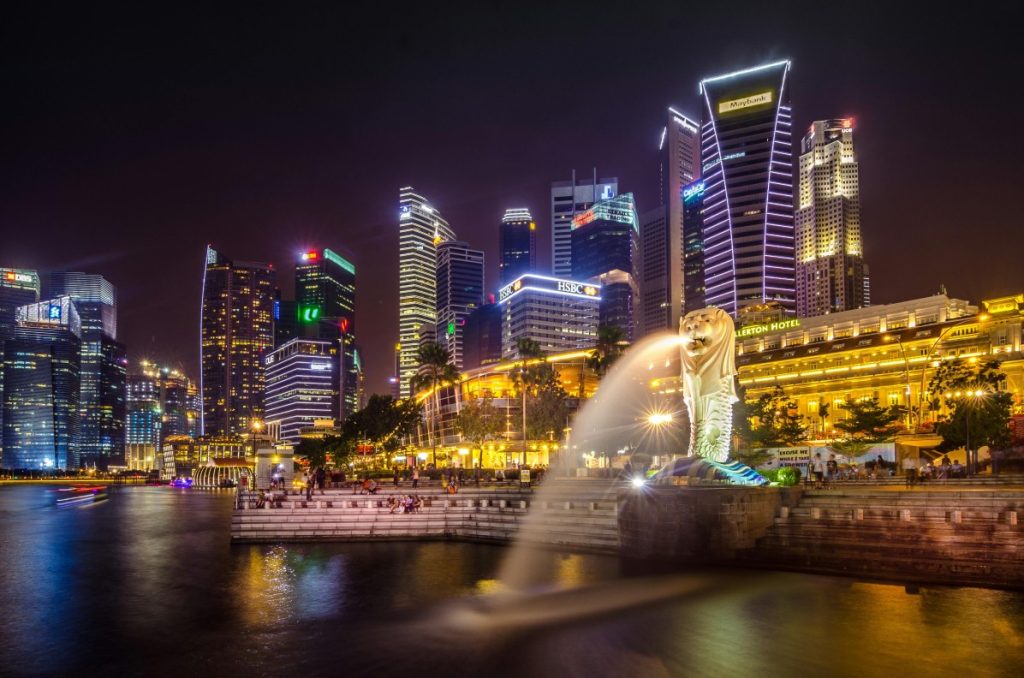
There is more to Singapore than Marina Bay Sands or Gardens by the Bay; it is a blend of culture, history, cuisine, and little-known narratives. The best way to delve into the city is to walk its streets, explore its neighborhoods, and participate in urban walks and city tours. The Tarzan Way offers curated experiences for first-time visitors that juxtapose well-known attractions with authentic interactions with the locals. Why City Tours Matter City tours are bridges to culture, history, and community. Benefits: Discover hidden gems not in guidebooks Save time with guided routes Interact with locals, taste authentic food, attend festivals Ideal for solo travelers, couples, and families who are looking to immerse themselves in Singapore vacation experiences. Types of City Tours 1. Heritage & Cultural Tours Explore Chinatown, Little India, Kampong Glam. Learn stories behind temples, markets, and family-run shops. Experience traditional food, art, and festivals. Pro Tip: Wear comfortable shoes; carry water. 2. Nature & Urban Green Tours Visit Gardens by the Bay, Singapore Botanic Gardens, Southern Ridges. Enjoy walking, hiking, panoramic views, and seasonal light festivals. Pro Tip: Bring a camera, sunscreen, and enjoy family-friendly spots. 3. Night Tours & Light Experiences Discover the city after dark: Marina Bay light show, Clarke Quay nightlife, Jewel Changi waterfall. Great for couples, photographers, and evening relaxation. 4. Culinary & Street Food Tours Must-visit hawker centers: Maxwell Food Centre, Old Airport Road, Lau Pa Sat. Sample iconic dishes like chicken rice, laksa, satay, and desserts. Pro Tip: Carry small bills, eat what locals eat, and ask about family recipes. 5. Offbeat & Thematic Experiences Hidden gems like Tiong Bahru murals, Pulau Ubin cycling, workshops (batik, Peranakan cooking). Ideal for travelers seeking authentic, local stories and hands-on experiences. Suggested Singapore 5-Day Itinerary Day 1: Marina Bay, Gardens by the Bay, river cruise Day 2: Chinatown & Little India heritage tours Day 3: Sentosa Island, Universal Studios/S.E.A. Aquarium Day 4: ArtScience Museum, Tiong Bahru cafés, Orchard Road shopping Day 5: Botanic Gardens, local cafés, Jewel Changi waterfall Pro Tip: Start early, plan around MRT routes, carry water and a camera. Best Time to Visit Jan–Mar: Pleasant, ideal for sightseeing Apr–Jun: Hot and humid; indoor attractions recommended Jul–Sep: Festival season, cultural immersion Oct–Dec: Occasional rain; Christmas lights and markets Planning around festivals enhances your Singapore trip guide experience. Where to Stay Bugis: Central, lively, MRT access Chinatown: Budget-friendly, culture-rich Clarke Quay: Nightlife and riverside dining Little India: Colorful heritage vibe Pro Tip: Stay near MRT lines for easy access to attractions. Special Experiences Romantic: Sunset cruises, rooftop dinners, spa retreats Family-Friendly: Sentosa, Night Safari, Singapore Flyer Solo Travel: Pulau Ubin cycling, hawker tours, cultural workshops Travel Tips Transport: MRT, buses; EZ-Link card recommended Apps: Grab, Google Maps for easy navigation Safety: Singapore is extremely safe Currency: SGD; small bills for hawkers Etiquette: Respect temples, avoid littering, follow local rules Shopping & Souvenirs Bugis Street: Fashion, souvenirs, quirky finds Chinatown: Crafts, snacks, home décor Little India: Textiles, spices, handcrafted items Orchard Road: Luxury and mid-range shopping Conclusion Singapore is a city filled with stories, flavors, and hidden treasures. Travelers can fully immerse themselves in the Singapore experience by participating in city tours, strolling through neighborhoods, sampling delicious street food, and attending festivals. You can visit on your own, as a couple, or with family; there is a way for everyone to create memories, immerse in culture, and enjoy local experiences that are only available in Singapore.
Spiti Valley: The Best Travel Guide to Finding the Right Time to Go
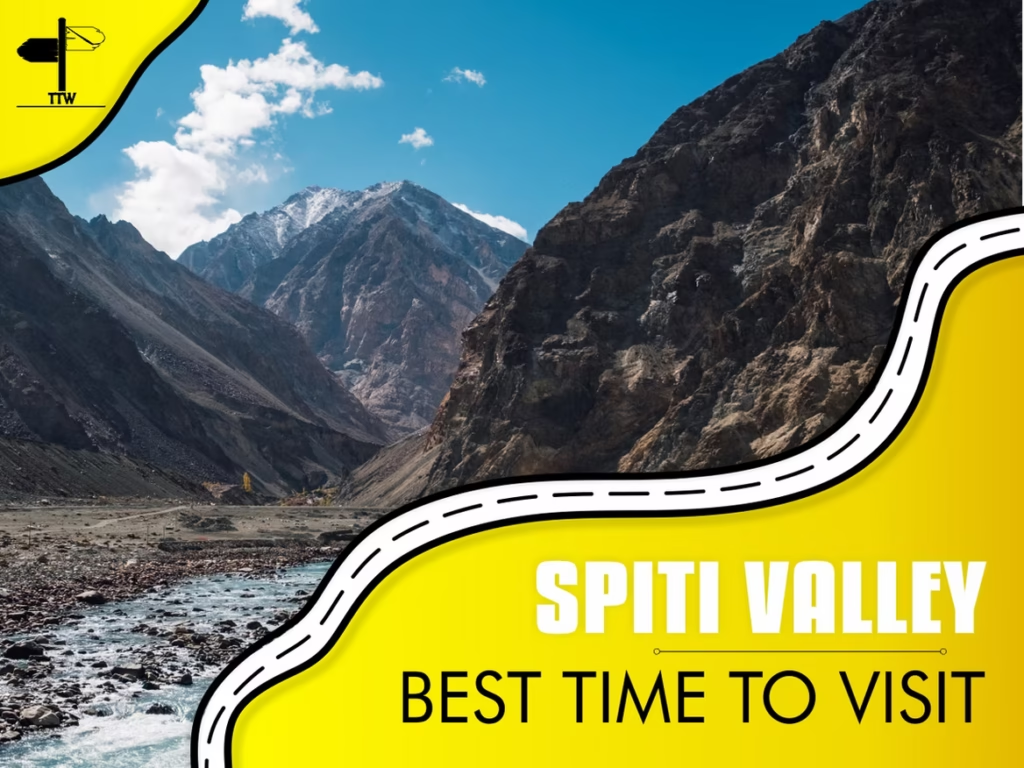
Some places on Earth are more than just places to go; they are trips to another world. One of these places is the Spiti Valley. This cold desert mountain valley is a piece of Tibet that has been cut off from the rest of India. It is in the far north-east of Himachal Pradesh. It’s a place of stark, breathtaking beauty, with ancient monasteries clinging to bare cliffs, clear blue rivers cutting through huge canyons, and a billion stars lighting up the night sky. If you’re not brave, you shouldn’t go to Spiti. The roads are hard to drive on, the altitude is hard to deal with, and the weather is bad. But for those who answer its call, the rewards are beyond measure. It’s an adventure that pushes you to your limits, a spiritual journey that calms your soul, and a cultural experience that opens your heart. The friendly people who live here, who have simple lives and warm smiles, are what make this valley special. Timing is the most important thing for a successful trip to the Spiti Valley. Picking the best time to visit Spiti Valley can make the difference between a great trip and a logistical nightmare. The weather here is very bad, and the high mountain passes that connect the two areas are only open for a few months each year. This is the most complete guide to planning the best trip to Spiti Valley. We’ll talk about everything, from the best time of year for your travel style to detailed itineraries, what to pack, how to budget, and all the things you need to do (and not do!). We have something for everyone, whether you’re looking for adventure, spirituality, or photography. A World Within a World: About Spiti Valley Credit: unsplash The name “Spiti” means “The Middle Land,” which is a perfect way to describe where it is between India and Tibet. It’s a cold desert at a high altitude, which means it doesn’t get much rain because the Himalayas block the monsoon clouds. This makes the area’s famous landscape: rocky, barren mountains in shades of brown, purple, and grey, with patches of green barley fields and the Spiti River’s shimmering turquoise. Tibetan Buddhism is the main religion in this area. There are some of the oldest and most important monasteries in the world in the valley. For more than a thousand years, there have been places where people can learn and grow spiritually. Life here is simple, hard, and very connected to nature and faith. A full breakdown of the best times to visit Spiti Valley by season Credit: freepik.com There isn’t one “best” time to visit Spiti; it all depends on what you want to do. The valley has a very different personality in each season. The best time to go is in the summer, from June to September This is the best time to visit Spiti Valley because it is the most popular and easiest to get to. The weather is perfect, and the whole Spiti circuit, even the high passes, is open. Weather: The temperature during the day is nice and warm, between 15°C and 25°C. A t-shirt and a light jacket are often enough to keep you warm. But the nights are still cold, with temperatures dropping to between 3°C and 7°C. Road Conditions: The highways from Manali to Kaza and from Shimla to Kaza are both open. There may be some water crossings from melting snow and occasional landslides caused by the monsoon on the roads leading up to the area (especially near Manali), but this is usually the safest time to go on a road trip. What to Look Forward To: Bright Landscapes: The valley is at its greenest right now, with lush barley fields making beautiful patches of colour against the dry mountains. Access: It’s easy to get to all of the monasteries, villages, and tourist spots, like the famous Chandratal Lake. Peak Crowds: This is the most crowded time of year, especially in June and July when Indian schools are out for summer break. There will be more tourists, and rooms can fill up quickly. Who Should Go in the Summer? This time of year is great for first-time visitors, families, and people who like the weather to be more pleasant. This is the best time to see and do everything the valley has to offer. Fall (from mid-September to October) is the best time for photographers Credit: freepik.com A lot of people who have been to Spiti Valley before say that this is the best time to go. The summer crowds are gone, the monsoon has passed, and the valley is now bathed in a magical golden light. The weather is nice and clear, with temperatures between 10°C and 20°C. But the nights get a lot colder, and they often go below freezing (0°C to -5°C). Road Conditions: The roads are mostly in great shape now that the monsoon rains have stopped. But there is a small but real chance that the Kunzum Pass (on the Manali route) will close after the first week of October due to an early snowfall. What You Should Expect: The valley turns into a canvas of fall colours that are stunning. After the harvest, the poplar and willow trees turn a bright yellow, and the fields turn a golden brown. Fewer Tourists: You’ll have the beautiful scenery and old monasteries all to yourself. Clear Skies: The air after the monsoon is very clear, giving you the best views of the snow-covered peaks and the stars at night. Who Should Come in the Fall? This time of year is great for photographers, people looking for peace, and experienced travellers who don’t mind the cold and want to see the valley at its most beautiful and peaceful. Winter (November to April) is the best time for an adventure Credit: pexels.com Not everyone can go to Spiti in the winter. It is a very extreme adventure that needs a lot
Top Dubai Tours: Perfect for Groups & Solo Travelers
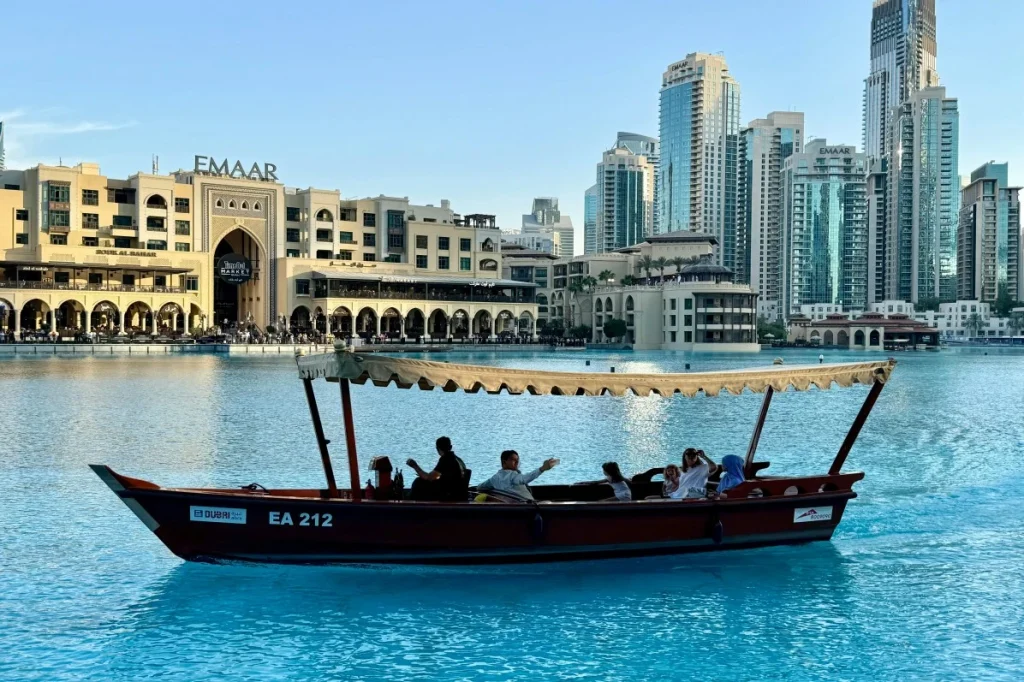
Dubai is full of contrasts — huge skyscrapers next to golden deserts; fancy resorts next to traditional bustling souks; and, on every corner, stories to uncover. Dubai has something for every traveler whether you’re traveling alone, with friends, or in a group. From adrenaline-charged activities to cultural explorations. Here is your guide to the best Dubai tours to help share ideas for your ideal trip. Planning a Dubai tour may seem overwhelming – there are so many options! The Tarzan Way has you covered. Tour itineraries designed by the experts help travelers narrow down experiences based on preferences, group size, and time pace so you can focus on memories without stress. Why Choose Dubai Tours? Exploring Dubai is more than basic sightseeing – it’s about experiencing the city more thoughtfully. Here are reasons why it’s a good idea to participate in a guided tour or follow a set itinerary: Local Knowledge: If you’re going to go on a guided tour, the tour guide is likely going to know the perfect times to see the best spots, where the hidden gem locations are. Convenience for Groups: Coordinated transport(relieving the burden of car rentals and taxis), entrance tickets, and tour guides make for a relaxing experience for all. Comfort Factor for Solo Travelers: Small group tours offer a perfect place to meet other like-minded travelers while also keeping it safe. Unique Experiences: Sometimes, a tour can include desert activities like safaris or cultural walks that can add a lot to your visit and show what to do in the tour besides dune bashing. If you like finding ways to get off the beaten path during travel, there’s a great blog about Dubai Desert Safaris – Offbeat and Unique Experiences You Can’t Miss that shares unique ideas on things to do in the desert instead of dune bashing that you’ll never forget! Top Dubai Tours for Group Travelers 1. Desert Safari Adventure A desert safari is a must-do while in Dubai — be it just a half-day ride or possibly an overnight camp, the desert is where adventure meets culture. What will you be doing: dune bashing, camel rides, standard sandboarding, and BBQ dinners under the stars, punctuated by traditional music. Pro Tip: Make sure you book for an evening — you’ll catch the dunes glowing from the sunset, and the temperature is cooler in the evening. For travelers looking for offbeat and unique experiences, combining the desert adventure with small cultural insights can be truly magical. You can even read Top Free Offbeat Things to Do in Dubai for ideas on quirky spots to explore nearby. 2. Dubai City Tour If you’re visiting the city for the first time, you definitely want to join a guided city tour. You will see all of the major sites without the stress of figuring things out based on transportation. Highlights of the tour include: Burj Khalifa, Dubai Mall, Dubai Fountain, Jumeirah Mosque, Palm Jumeirah, Atlantis The Palm. Pro Tip: If you choose a morning tour, there are usually fewer crowds. It is perfect to do the tour in the day, and then go back for the evening fountain show. Members also love this type of tour because they combine seeing the sites, and a little flexibility for shopping or photo stops. 3. Abu Dhabi Day Trip A short drive from Dubai will take you to Abu Dhabi, where you can enjoy culture and luxury beyond what Dubai has to offer. As a reminder, Abu Dhabi’s highlights include: Sheikh Zayed Grand Mosque, Louvre Abu Dhabi, Ferrari World, and Yas Marina Circuit. Pro Tip: Visiting on a midweek day is quieter and more relaxing. Usually, you can plan the wonder of a day trip to Abu Dhabi alongside your Dubai city tour as part of a larger experience of the UAE together. This arrangement tends to serve well for travelers wanting a modern city and culture. 4. Adventure & Sports Tours Dubai offers plenty for those who seek an adrenaline rush. From sky-diving over Palm Jumeirah, to jet-skiing and flyboarding, there is no shortage of excitement for every type of thrill seeker. Pro Tip: If you are traveling in the high season (Nov-Mar) to Dubai, take the opportunity to book in advance to guarantee time-slots for the best adventures at the best price. Whether you are a solo traveller or part of a group, adventure and sightseeing tours are going to be an especially engaging way to visit Dubai. Don’t forget, if you want to incorporate an ‘off the beaten path’ and experience that is a little more affordable, some experiences shared in this post from Dubai Travel on a Budget – Is It Possible? would compliment a great, fun day. 5. Cultural & Historical Tours Dubai has a rich past, and exploring it can be fascinating. Al Fahidi Historical District, Dubai Museum, Dubai Creek, Gold Souk, Spice Souk are the highlights. Pro Tip: Take a traditional abra ride across Dubai Creek — it’s a peaceful and authentic way to soak in the city’s history. For a more romantic and cultural angle, couples can also check Old Dubai’s Hidden Gems – Cultural Charms for a Romantic Getaway for ideas on scenic walks and historical spots. Best Dubai Tours for Solo Travelers 1. Walking & Food Tours Solo travelers love walking and food tours — they’re social, easy, and authentic. Highlights: Try shawarma, luqaimat, camel milk ice cream, and explore lively neighborhoods. Pro Tip: Evening tours combine food sampling with cultural insights — a great way to meet people. 2. Art & Photography Tours Dubai’s public art, skyscrapers, and street murals make it a photographer’s paradise. Highlights: Alserkal Avenue, Dubai Opera, colorful murals, futuristic architecture. Pro Tip: Early morning light is ideal for capturing the best photos. For solo travelers looking for creative inspiration, there’s a helpful guide on Dubai Dreams – Honeymoon Adventures Unveiled that also includes visual spots perfect for photography. 3. Wellness & Spa Tours Relaxation is also part of the solo travel experience
13 Best Instagram-Worthy Travel Spots in India (The Tarzan Way)
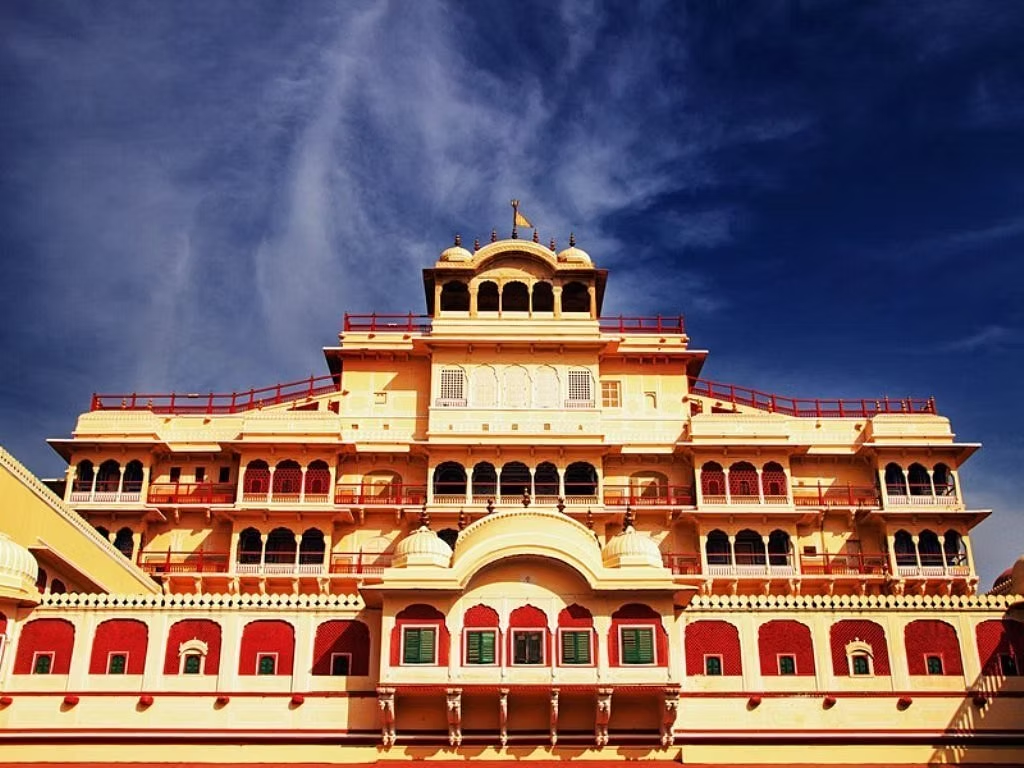
A picture can tell a story and be shared with the whole world in a matter of seconds on social media. For travelers, this means finding those beautiful places that not only take your breath away but also make for the best pictures. India is a photographer’s and traveler’s dream because of its amazing variety of landscapes, colors, and cultures. There are so many beautiful places just waiting to be photographed, from snowy mountains and huge deserts to old ruins and colorful cities. But where do you even start with all of these choices? We’ve made a list of the best places in India to take pictures for your next vacation. This isn’t just a list of nice places; it’s your guide to getting the perfect shot that will make your followers want to go. Let’s get started! 1. The City Palace in Jaipur: The Royal Doors Image by Trip Advisor There are many great places to take pictures at the City Palace in Jaipur, but the four beautiful gates in the inner courtyard are the most famous. Each gate has a different season on it and is covered in bright colors and very detailed patterns. The Money Shot: A picture of a person in front of the green Leheriya Gate, which stands for spring. A beautiful picture that shows off the Peacock Gate’s many small details (which stand for fall). Pro Tip: This place is very popular, so you might have to wait in a short line to get a good picture of each door. Wait; it’s worth it to get a picture without other people in it! 2. Chamba Camp, Thiksey (Ladakh): A luxurious place to stay in the mountains Image by Trip Advisor The Chamba Camp in Thiksey is the best place to go for “glamping” (glamorous camping) with a view that looks like it came straight out of a magazine. The beautiful Thiksey Monastery and the Himalayan mountains are behind these luxury tents. The Money Shot: A picture of your fancy tent with the beautiful Thiksey Monastery in the background. A picture of the beautiful mountains taken from your own outdoor seating area. Pro Tip: This is a seasonal camp, so it’s usually open from May to October. Make your reservations well in advance because it’s a very popular and exclusive event. 3. The Backwaters in Alleppey, Kerala Image by Pick Your Trail The calm backwaters of Alleppey, which is also known as the “Venice of the East,” are very well-known. You have to take a ride on a traditional houseboat to see palm trees, small villages, and beautiful green scenery. The Money Shot: A picture of a houseboat moving through calm waters from the deck. A picture of a local fisherman in his small canoe with a beautiful sunset behind him. Pro Tip: Stay on a houseboat for the night. The views at sunrise and sunset are the most beautiful and give the best light for pictures. 4. The Tea Gardens in Munnar, Kerala Image by Holidify There are endless rolling hills of perfectly manicured tea plantations all over the hill station of Munnar. The tea bushes’ straight lines against the misty mountains make for a beautiful and calm scene. The Money Shot: A wide shot of the green tea valleys that shows how big they are. A picture of you or your friends walking along the narrow paths between the tea plants. Pro Tip: A lot of tea gardens have set places for taking pictures. To get a more unique picture, ask your driver to take you to a viewpoint that isn’t as busy. 5. Valley of Flowers in Uttarakhand: A Colorful Carpet Image by Veena World This place looks like it came straight out of a storybook. During the monsoon season, the Valley of Flowers National Park is full of hundreds of different kinds of colorful flowers. The Money Shot: A wide shot of the valley that shows how many different kinds of flowers there are and how thick they are. A close-up of a rare and lovely flower, like the hard-to-find Blue Poppy. Pro Tip: The valley is only open from June to October, so keep that in mind. The best time to see the flowers in full bloom is from mid-July to mid-August. 6. The White Desert in Gujarat’s Rann of Kutch Image by Country Holidays Inn and Suites The Rann of Kutch is the biggest salt desert in the world. In the winter, it becomes a huge, strange landscape of white salt crystals that goes on forever. The Money Shot: A picture taken at sunset, when the pink and orange colors of the sky are reflected in the white sand. A creative shot that plays with perspective because the flat, empty landscape makes for fun photo tricks. Pro Tip: Go during the Rann Utsav festival, which happens from November to February most years. The bright cultural events and fancy tents make for great photo opportunities. 7. Dal Lake in Kashmir: Heaven on Earth Image by Wion Dal Lake in Srinagar is like a painting come to life. The calm blue water perfectly reflects the huge Himalayan mountains. The colorful shikaras (traditional boats) make it even more beautiful. The Money Shot: A picture taken while riding a shikara with the beautiful mountains in the background. A colorful picture of the flower and vegetable market that floats in the early morning. Pro Tip: Go in late July or August to see the lake’s famous lotus flowers in full bloom. This will make your photos even more beautiful. 8. The Blue City: Jodhpur, Rajasthan Image by Trip Savvy The old city of Jodhpur is known for the thousands of houses that are painted a beautiful shade of blue. The best place to see this is from the top of the huge Mehrangarh Fort, which has a stunning view of the blue sea of houses below. The Money Shot: A wide-angle picture of the blue houses from the top of Mehrangarh Fort. A
